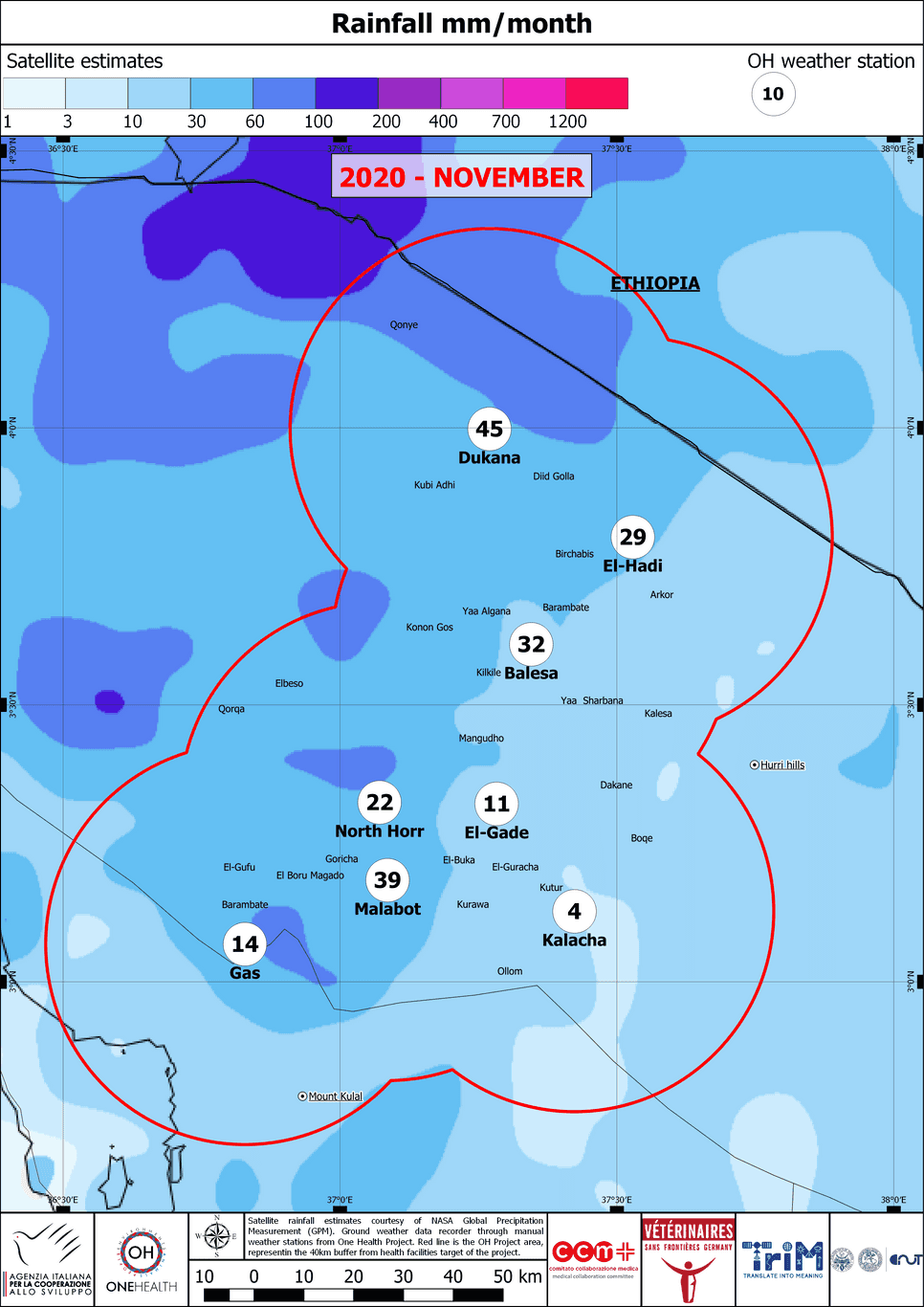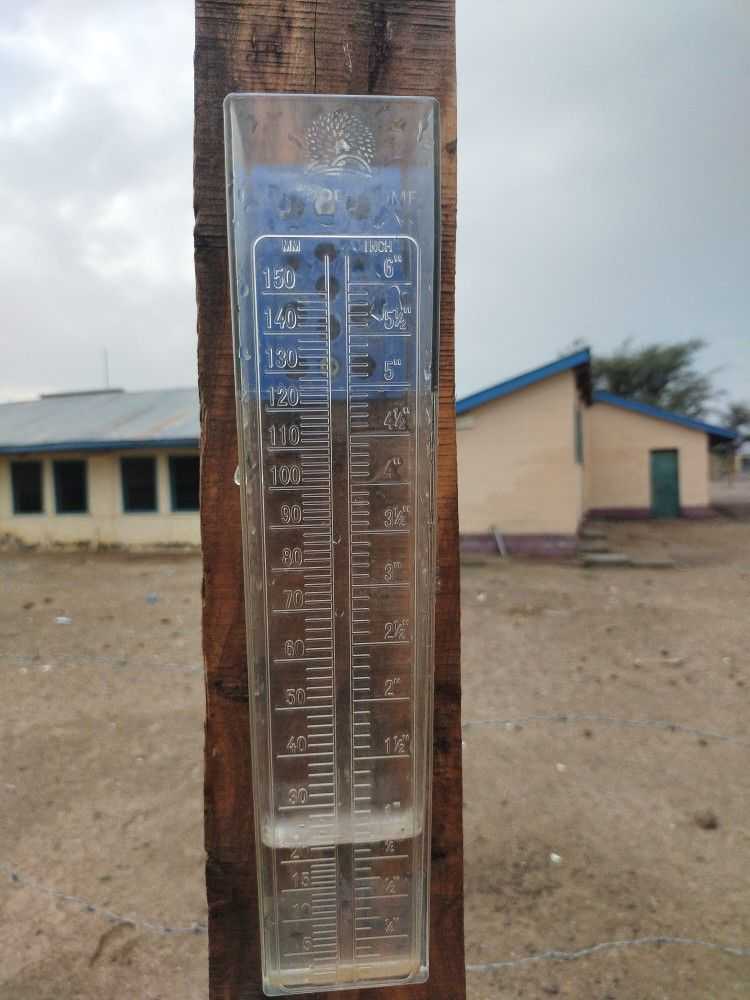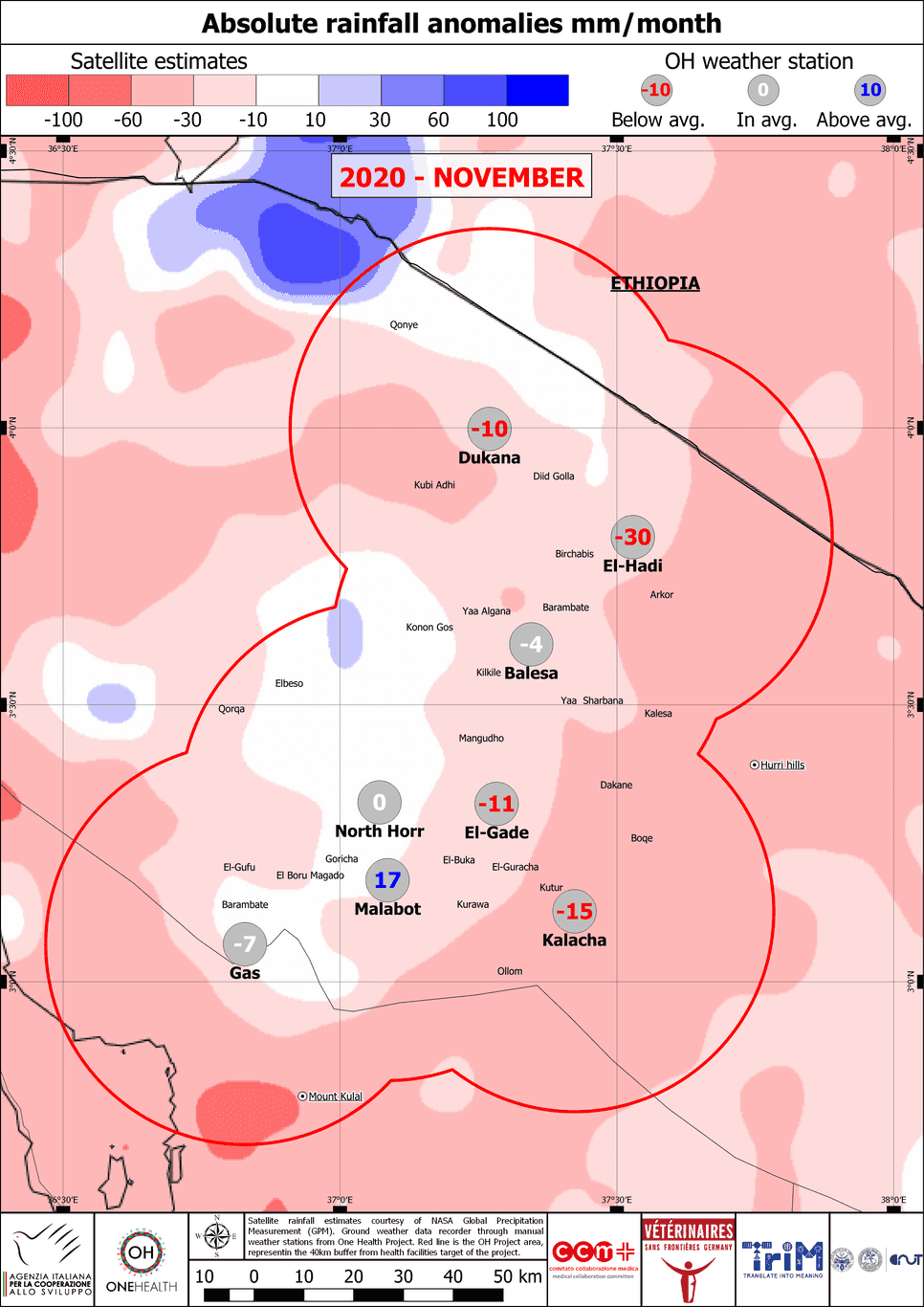
November 2020: Monthly Rainfall Analysis, North Horr Sub-County (KENYA)
December 4th, 2020
November started with pretty dry conditions over North-Horr Sub-County. The conditions improved slightly as some areas recorded sparse and light rain showers from 6th and 8th November with three manual weather stations in Dukana, El-Hadi and Balesa facilities recording rainfall albeit minimal.
During the third week of November, specifically on the 23rd November 2020, the GFS weather model started to indicate an increasing likelihood of rainfall over the whole Sub-County for the period 25th-28th October. This prediction was in tandem with the traditional indicators and predictions and on 25th November 2020, Kenya Meteorological Department (KMD) issued an official alert on expected above normal rainfall with Marsabit County among the Counties to be affected. Scientific and traditional information was promptly shared with the community members and relevant stakeholders highlighting potential positive and negative impacts expected and precautionary measures to safeguard lives and livelihood assets.
Accumulated Rainfall November 2020
The amount of rainfall was closely monitored and recorded by various manual weather stations and true to the predictions, some facilities recorded up to 50mm/24h.
North Horr rain gauge on 26th October 2020
Fortunately, there were no negative consequences on humans and animals.
Overall rainfall recorded at weather stations and estimated by the NASA-GPM satellite during the month of November show average to slightly below average rainfall over the following catchment areas: Dukana, El-Hadi, Balesa, Gas. Average to slightly above average rainfall was recorded at Malabot weather station and estimated by the satellite north-west from North Horr.
Rainfall Anomaly November 2020
There were mixed fortunes for the pastoralists as mass calving were reported in some areas like Elborumagadho in Gas while animal deaths mostly among the lambs and kids, pasture scarcity and fire outbreak were reported. Reported rabies outbreak in Gas that lead to a total of 36 camel deaths was one major hazard and the risk of the same recurring in Malabot is high due to reported dog menace.
Community Sensitization on Rabies control and management at Barambate
Due to pasture scarcities, animals did not migrate back from areas of Darathe, Buluk, Sabarei, Hurri Hills and Chari Ashe though migrations were reported in areas of Malabot with animals headed towards Balesa Bura and Sarimo.
This analysis is produced in the framework of the One Health project: Multidisciplinary approach to promote the health and resilience of pastoralist in North Kenya – AID11507. It is a 3-year initiative funded by the Italian Agency for Development Cooperation, aimed at improving the access and coordination of human and animal health services and of early warning and response systems to dangerous events that could put the pastoralist communities' health in North Horr Sub-County at risk. The project is led by CCM-Comitato Collaborazione Medica in partnership with VSF Germany - Veterinarians without Borders Germany, TriM - Translate into Meaning, and DIST - Interuniversity Department of Regional and Urban Studies and Planning.



